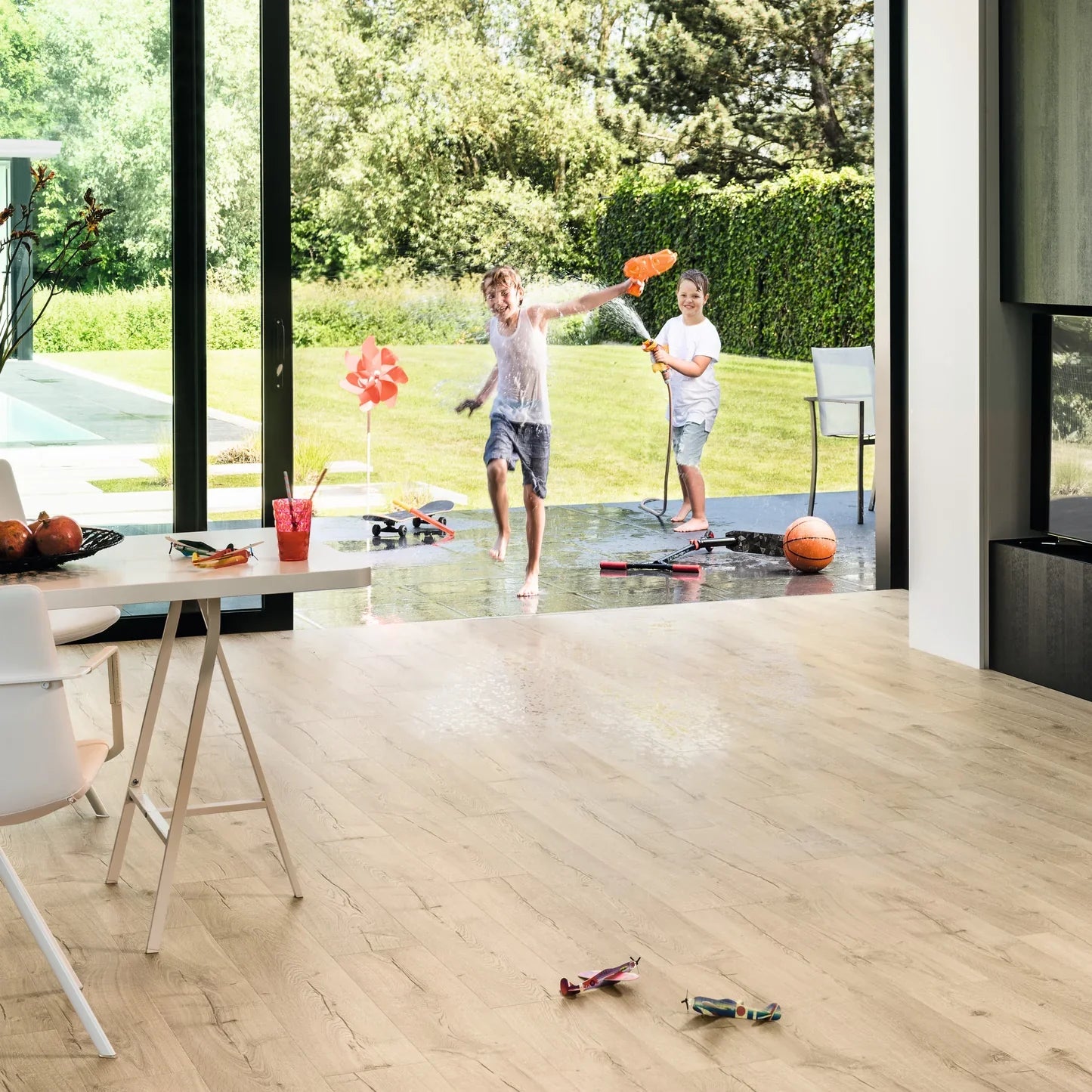
Author, Written by: P. Hirani (Wood flooring Expert)
When it comes to choosing stylish, durable flooring in 2025, two options continue to lead the way: engineered wood and laminate flooring. Both offer attractive wood-look finishes, but they differ in materials, performance, and price. So, how do you know which one is right for your home?
Let’s break it down. Here's everything you need to know to choose between engineered wood and laminate flooring—based on what matters most in modern homes today.
1. What's the Core Difference?
✔ Engineered Wood:
Made with a real wood veneer on top of multiple layers of plywood or HDF (high-density fiberboard).
You get the authentic look and feel of hardwood with added structural stability.
✔ Laminate:
Composed of a high-resolution photographic layer (that mimics wood), topped with a protective wear layer, and built on a core of fiberboard.
It’s 100% man-made—designed to look like wood but with greater durability and lower cost.
🪵 Quick takeaway: Engineered wood = real wood feel; laminate = synthetic, but often tougher.
2. Appearance & Realism: What's More Convincing?
-
Engineered Wood:
✅ Natural wood grain, knots, and texture—because it is real wood
✅ Ages beautifully over time
✅ Slight variations between planks add to the charm -
Laminate:
✅ High-definition printing and embossed textures now look incredibly realistic
✅ Uniformity in planks for a clean, modern look
✅ Available in more trendy finishes and colours than ever before
🎨 In 2025, some high-end laminates are so realistic, it’s hard to tell the difference at first glance—but engineered wood still wins for authenticity.
3. Durability & Resistance: Which One Handles Daily Life Better?
-
Engineered Wood:
🔸 More moisture-resistant than solid hardwood
🔸 Can dent or scratch more easily than laminate
🔸 Can be refinished (depending on wear layer thickness) -
Laminate:
✅ Highly scratch- and impact-resistant
✅ Ideal for busy homes with pets or kids
✅ Most options now come with water-resistant or waterproof cores
💧 For high-traffic or spill-prone areas, laminate may hold up better day to day.
4. Installation: DIY or Call a Pro?
-
Engineered Wood:
🔨 Click-lock options allow for floating installation
🔨 Glue-down or staple-down methods often require professional help
🔨 Heavier and may require underfloor prep -
Laminate:
✅ Lightweight and easy to cut
✅ Click-and-lock systems make it ideal for DIY
✅ Can go over most subfloors or even existing flooring
🛠️ Want a weekend project? Laminate is the simpler choice.
5. Comfort & Acoustics: Which Feels Better Underfoot?
-
Engineered Wood:
✅ Feels warmer and more solid underfoot
✅ Can be paired with acoustic underlay for quieter steps
✅ Better sound absorption in multi-level homes -
Laminate:
🔸 May feel harder or hollow without a good underlay
🔸 Can be noisier—footsteps may echo in some spaces
🔸 Some premium options now include sound-reducing layers
👣 For bedrooms and living rooms, engineered wood adds more natural warmth.
6. Cost Comparison: What’s the Budget Impact in 2025?
-
Engineered Wood:
💷 Mid to high price range (especially for thicker veneers)
💷 More expensive installation (if not DIY-friendly) -
Laminate:
💷 Budget-friendly, even for high-quality options
💷 Lower overall cost for materials and installation
💰 Trying to renovate affordably? Laminate stretches your budget further.
So, Which Should You Choose in 2025?
Final Thought (Without Saying “Final Thought”)
The choice between engineered wood and laminate comes down to what you value most: authenticity vs. durability, elegance vs. ease, and investment vs. practicality. Engineered wood is ideal for those who want timeless beauty and warmth, while laminate is a solid performer for busy homes and tighter budgets.
✨ Still torn? Let us help you compare samples and find the perfect floor for your lifestyle and space.
About Author:
Peter H. is a flooring product expert who knows all about different types of flooring materials. He shares his knowledge in blogs to help readers make the best choices for their spaces.
